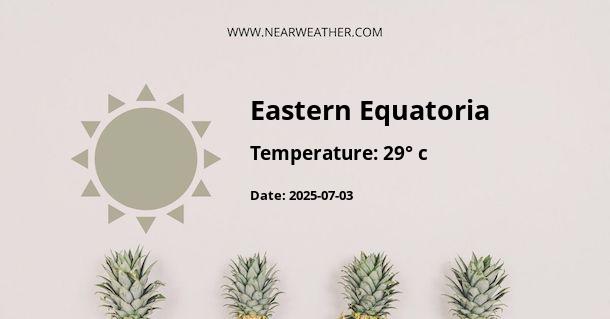Climate and Weather in Eastern Equatoria State, South Sudan
Eastern Equatoria State is located in the southeastern part of South Sudan. It is known for its diverse climate and weather conditions throughout the year. The state experiences both dry and rainy seasons, which significantly impact the local environment and agricultural activities. Understanding the climate and weather patterns in Eastern Equatoria State is crucial for planning various activities such as farming, tourism, and infrastructure development.
Geographical Factors
The climate in Eastern Equatoria State is influenced by several geographical factors. The state lies within the equatorial region, which means it experiences high temperatures and humidity throughout the year. It is also located at a relatively higher altitude compared to other parts of South Sudan, which helps to moderate the temperatures slightly.
Temperature
Eastern Equatoria State experiences warm to hot temperatures throughout the year. The average annual temperature ranges from 25 to 30 degrees Celsius (77 to 86 degrees Fahrenheit). During the dry season, which extends from December to March, temperatures can rise significantly, reaching highs of 35 degrees Celsius (95 degrees Fahrenheit) or more. The hottest months are usually January and February.
During the rainy season, from April to November, temperatures are slightly lower due to cloud cover and precipitation. However, it still remains warm, with average temperatures ranging from 25 to 28 degrees Celsius (77 to 82 degrees Fahrenheit).
Rainfall
The rainfall pattern in Eastern Equatoria State is characterized by a bimodal distribution, meaning it has two distinct rainy seasons in a year. The long rainy season occurs from April to August, while the short rainy season occurs from October to November.
The long rainy season receives the highest amount of rainfall, with an average precipitation of 800 to 1,000 millimeters (31 to 39 inches). This rainfall is essential for agriculture and supports the growth of crops such as maize, sorghum, and vegetables.
The short rainy season receives relatively less rainfall, with an average precipitation of around 300 to 500 millimeters (12 to 20 inches). While this rainfall is not as significant for agriculture, it helps to replenish groundwater sources and maintain the overall ecological balance in the region.
Dry Season
The dry season in Eastern Equatoria State lasts from December to March. During this period, the region experiences low rainfall and dry conditions. The vegetation becomes dry and brown, and water sources, such as rivers and ponds, may dry up or reduce in volume.
Due to the lack of rainfall, agricultural activities are significantly impacted during the dry season. Farmers rely on irrigation or water storage techniques to sustain their crops. It is also a time when wildfires can occur, posing a threat to both the environment and human settlements.
Weather Hazards
Eastern Equatoria State is occasionally affected by weather hazards such as floods and droughts. Heavy rainfall during the rainy season can lead to flooding, especially in low-lying areas. This can result in damage to infrastructure, displacement of communities, and the spread of waterborne diseases.
Droughts, on the other hand, can occur during prolonged dry seasons. Lack of rainfall and water scarcity can have severe consequences on agriculture, livestock, and overall human well-being. It is essential for the government and communities to have appropriate mitigation and adaptation strategies in place to address these weather hazards.
Conclusion
Eastern Equatoria State experiences a diverse climate and weather pattern throughout the year. From warm to hot temperatures, along with distinct dry and rainy seasons, the state's climatic conditions significantly impact various sectors such as agriculture, infrastructure, and tourism. Understanding and adapting to these weather patterns are crucial for the sustainable development and well-being of the region's residents.
A - Eastern Equatoria's Latitude is 4.900000 & Longitude is 33.799999.
A - Weather in Eastern Equatoria is 35° today.
A - Climate Conditions in Eastern Equatoria shows broken clouds today.
A - Humidity in Eastern Equatoria is 28% today.
A - Wind speed in Eastern Equatoria is 28.44 km/h, flowing at 118° wind direction. today.
